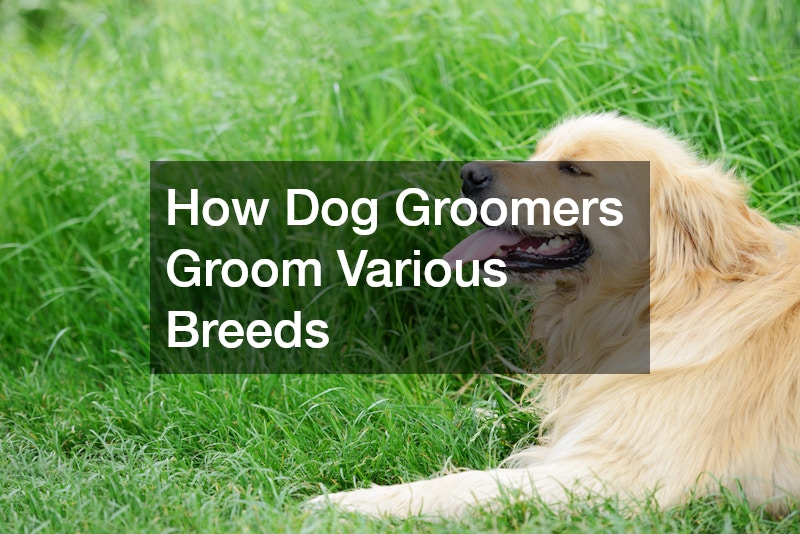
Grooming is an essential aspect of pet care, ensuring not only the hygiene and aesthetic appeal of dogs but also their overall health and well-being. The diverse range of dog breeds, each with specific coat types, skin sensitivities, and behavioral traits, demands tailored grooming techniques to address their unique needs effectively. Understanding the significance of breed-specific grooming is crucial for dog groomers striving to provide the best care for their canine clients.
Different dog breeds come with a variety of coat types, ranging from wiry and curly to double-coated and smooth, each necessitating a specific grooming approach. The grooming technique for a Poodle, known for its dense curls, will differ significantly from that of a Golden Retriever, which has a double-layer coat designed to protect against harsh weather elements.
Video Source
Breed-specific grooming not only helps in maintaining the aesthetics of the dog but also contributes to their health; improper grooming might lead to skin issues or exacerbate existing conditions.
Among the myriad of grooming techniques, handling the undercoat properly is crucial, particularly for breeds with dense or double coats. Breeds such as Siberian Huskies or German Shepherds require regular de-shedding and brushing to prevent matting and to keep them cool in warmer climates. Furthermore, recognizing the unique grooming needs of each breed allows groomers to employ specialized tools and methods that cater specifically to the health and lifestyle of these animals.
A comprehensive arsenal of grooming tools is essential to cater to the diverse grooming needs of various dog breeds effectively. For instance, a slicker brush is indispensable for breeds with thick undercoats such as the Alaskan Malamute or the Collie. Similarly, de-matting combs are valuable assets when grooming long-haired breeds like the Afghan Hound, as they help in detangling without damaging the hair shaft.
The use of appropriate products is equally important in ensuring a successful grooming outcome. Hypoallergenic shampoos are recommended for breeds with sensitive skin, such as the Chinese Crested, to prevent allergic reactions. Moreover, conditioning sprays that facilitate easier brushing and prevent tangles are ideal for breeds like the Maltese, which have a fine, silky coat.
Managing shedding in high-shedding breeds is a task that demands both skill and the right tools to ensure a clean and healthy coat. The use of de-shedding brushes and tools can significantly reduce the fallout of dog hair in homes, which is especially important for breeds such as Labradors and German Shepherds. Regular grooming sessions are fundamental in controlling shedding, effectively removing loose fur before it ends up on household surfaces.
Frequent brushing during shedding season is crucial, especially for breeds with dense undercoats like the Akita and the Samoyed. Groomers often adopt specialized techniques such as blow-drying to remove excess fur post-bath, thereby minimizing loose hair. Additionally, recognizing the role of diet in shedding can further aid in managing excess hair loss, highlighting the intricate balance required between grooming and overall canine nutrition.
Grooming long-haired breeds presents unique challenges due to the potential for tangling and matting, which can be uncomfortable and even harmful to the dog's skin and coat. Breeds like the Afghan Hound and the Yorkshire Terrier require meticulous attention to maintain their luxurious coats without causing distress. Regular brushing and the use of detangling sprays are essential to prevent mats and ensure a smooth grooming process.
Providing a stress-free grooming experience for anxious dogs begins with creating a calm, welcoming environment. Many groomers employ strategies such as playing soothing music or using aromatherapy to relax nervous canines. Additionally, the gradual introduction to grooming tools helps dogs acclimate to the sensations and sounds associated with the grooming process.
Dog grooming is an intricate art form, requiring a deep understanding of the varying needs of different breeds to provide effective care. The unique grooming needs of each breed underscore the necessity of having specialized tools and techniques to manage everything from shedding to anxiety. The dedication and knowledge of skilled groomers ensure that the grooming experience is not only beneficial for the dog's health but also enjoyable and stress-free. As the demand for professional grooming services continues to grow, the emphasis on tailored grooming practices remains paramount in promoting the well-being of our beloved canine companions.
.